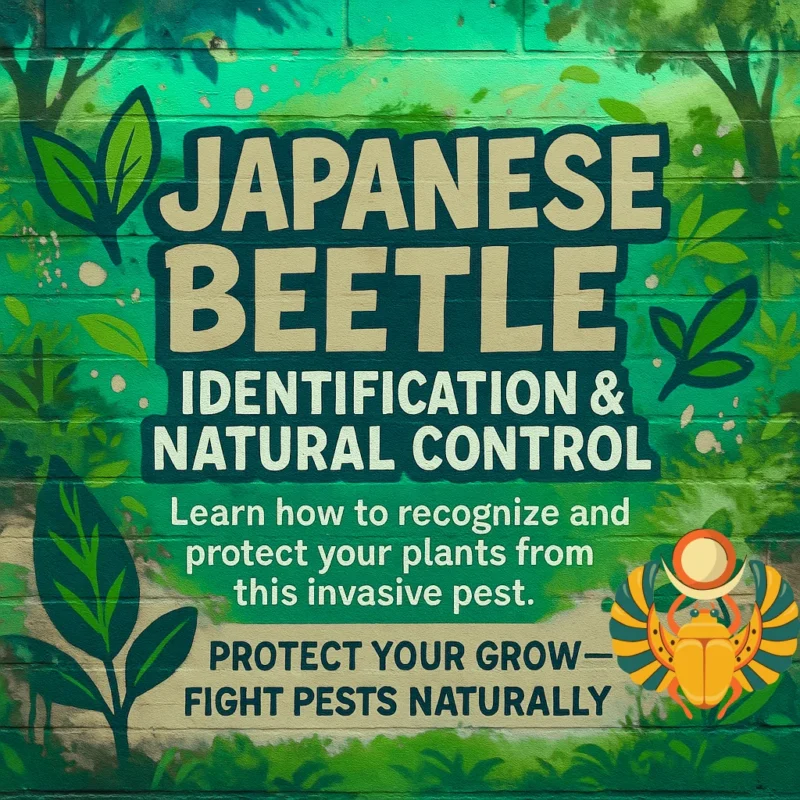
Japanese beetle: a silent threat to gardens, crops and lawns
A green enemy that makes no noise
At first glance, it may seem like an ordinary insect: small, oval-bodied, with metallic reflections. Yet the
Where was it found in Italy?
The first documented sighting was in 2014 in Lombardy. Since then, its spread has not stopped. Today, the beetle is also present in Piedmont, Emilia-Romagna, Veneto and parts of Liguria. Authorities fear it could spread to central and southern regions as well, taking advantage of the favorable climate and rich variety of cultivated plants.
Why is it so scary?
The real danger of the Japanese beetle lies in its voracity. Adults feed on more than
The damage: from vines to public gardens
In agriculture
The most affected crops include grapevine, corn, soybean, fruit trees and vegetables. In grapevines, leaves are completely skeletonized, reducing the plant’s photosynthetic capacity. In corn and soybean fields, damage is observed that slows plant growth, while in orchards, massive defoliation is reported on apple, pear and cherry trees. Vegetables such as potatoes, carrots, tomatoes and green beans are also not spared.
In the meadows and pastures
Larvae cause serious problems in turfgrasses by feeding on the roots. Lawns appear yellowed, dry and difficult to recover. In pastures, this results in lost productivity and increased costs associated with reseeding and irrigation.In the urban green
Even public gardens and green spaces in cities are not immune. The beetle attacks ornamental trees such as maples, birches, limes and elms, as well as roses, flowering shrubs and English lawns. The damage, in addition to being aesthetic, results in higher costs for maintenance and management of public green spaces.How to recognize it
The adult Japanese beetle has a body about an inch long, metallic green in color, with shiny copper-colored elytra. On the side of the abdomen it has five white tufts on each side, making it easily recognizable from other similar insects.Traps: an ecological solution
A widely used method to limit the spread of the beetle is the pheromone trap, which uses natural chemicals to attract adults and trap them in a net. Among the options available on the market, the Popillia trapper stands out for being organic, poison-free and Italian-made.
The trap is easy to use: it is hung about one meter above the ground in a sunny area and at least three meters away from the plants to be protected. When the net is half full, it should be emptied, and the insects can be eliminated by simply dipping the net in water.Other containment strategies
In addition to the use of traps, it is important to adopt effective agronomic practices. Deep plowing can disrupt larvae development in the soil, while crop rotation with plants less liked by the beetle helps reduce pest pressure. Proper irrigation management, especially in the summer months, can help make the soil less conducive to larvae survival.
Research is also exploring natural methods such as using entomopathogenic nematodes or fungi such as Beauveria bassiana, as well as enhancing native predators. In some cases, where permitted by regulation, treatments based on Azadirachtin, a natural neem extract, or chemical insecticides such as lambda-cyhalothrin or imidacloprid may be used, but their use remains very limited.What the law says
According to EU Regulation 1143/2014, Popillia japonica is considered an invasive alien species of EU significance. This implies specific obligations to monitor, contain and, where possible, eradicate the beetle. In Italy, the National Phytosanitary Service coordinates activities with the support of the regions.
What citizens can do
Individual citizens can also contribute to the fight against the Japanese beetle. Promptly reporting the presence of the beetle to the appropriate authorities is crucial. It is equally important to avoid moving potted plants, lawn clods or topsoil from infested areas so as not to encourage the insect to spread to new areas.
The conscious use of traps and the choice of native plants in private gardens can be a concrete contribution to the protection of local biodiversity.
Conclusion: acting now is essential
The Japanese beetle poses a real and growing threat to the Italian environment, agriculture and landscape. However, integrated and shared management based on cooperation between public agencies, technicians, farmers and citizens can make a difference.
Taking action now, with proper tools and correct information, is the only way to contain the problem and protect our territory.